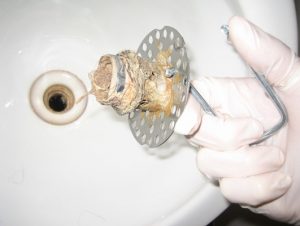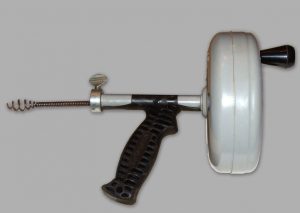A Guide to Drain Cleaning for the DIY Enthusiast
 Our homes are the havens of rest and safety where we return after a day in the field, trenches and offices. The safety and convenience of our natural surroundings is easily taken for granted until, quite unexpectedly, the amenities that make our life so great suddenly go on the blink.
Our homes are the havens of rest and safety where we return after a day in the field, trenches and offices. The safety and convenience of our natural surroundings is easily taken for granted until, quite unexpectedly, the amenities that make our life so great suddenly go on the blink.
One of the most overlooked feature of the home is the indoor plumbing.
The way the wastewater is carried away through the pipes is a marvel of physics and engineering. It takes experience and insight to address issues with this system effectively. With this in mind, let’s look at the topic of drains and how they should be cleaned. As long as water and waste is passing through your pipes there will be a blockage eventually.
The responsibility of keeping these tubes and pipes flowing freely falls on the home occupants and the skills of a reliable plumber.
Regular maintenance ensures that the drains are kept:
- Sanitary
- Safe
- Clean, and
- Healthy to those living inside
There are also many signs that drains and pipes are not functioning properly, including:
- Water that does not flow down the sink
- A foul odors emanating from sewers and pipes
- An overflow in the toilets
- Stale pools of standing water forming around the home
Drain cleaning is an important treatment that can restore the sewages works and drainage systems that have been affected by a clog. Serious plumbing issues are a more consistent situation in heavily populated regions and cities. If left unaddressed a serious health hazard as well as extensive property damage can ensue.
A clogged drain line can begin to leak in the most unexpected places and locating the site can take time while damage increases. This is why it is important to perform a thorough drain cleaning to avoid the onset of this minor catastrophe.
Do-It-Yourself Drain Cleaning
In one scenario, cleaning your drains can be a minor operation which could even be handled by the novice DIY enthusiast. This involves a simple chemical compound (like Drano) available at your local supplies store. This can be effective at clearing moderately blocked passages and tubes. The strong chemicals can effectively melt the grease, hair and other debris that obstruct the drainage. This is the considered the most basic method of cleaning drains and pipes.
But, drain cleaning is not always addressed with a chemical solution. There are actually a great many tools, agents and implements in a plumber’s tool box that can be unleashed on the most stubborn clog. The home pump is an example of one device that can be used easily on floor drains, kitchen sinks and bathtubs drains.
Drain cleaning is a fairly straightforward task except that it can become especially difficult when the home’s occupants become neglectful about their task. This can lead to inevitable clogs and obstructions that will need hefty reparations to restore. The smallest obstructions can cause major problems as well if they are not addressed promptly.
Most clogs are caused by the following
- Hair
- Dead Skin Cells and Soap Scum
- Oils and Grease
- Other debris including paper, pieces of jewelry, plastic and more.
It is most unfortunate when other larger harder materials find their way into the drains. Steel, stones, bones and metals can seriously damage the pipes from the inside and eventually require serious reconstruction.
Drain Snakes and Augers
 Other implements that can address more serious clogs include drain augers, the plumber’s snake as well as pressurized air or water.
Other implements that can address more serious clogs include drain augers, the plumber’s snake as well as pressurized air or water.
When using these implements and tools to address clog it is essential that all obstructions are removed or the task has not been fully accomplished and will soon present itself in a new and more complex clog.
Many of these tools and implements are very potent or sharp and can inflict serious damage on the home’s plumbing from the inside if wielded by inexperienced “do-it-yourself plumbers”.
If you are not sure you have the capacity to address the clog that presents itself on your home and property, it may be the best idea to call in the professionals. This can help to avoid further drainage issues.
